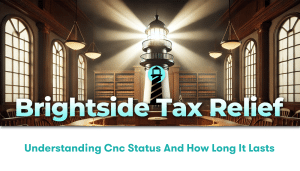Unlocking the Basics of IRS PPIA
The Internal Revenue System (IRS) can often seem like a labyrinth, with an array of terms, forms, and procedures that are confusing to uninitiated individuals. One phrase that often comes up during tax discussions is IRS PPIA or Partial Payment Installment Agreement. In this post, we delve into the core aspects of IRS PPIA, decoding complex jargon and simplifying it for taxpayers.
What Exactly is IRS PPIA?
In simple terms, IRS PPIA is a tax relief provision designed to assist taxpayers who lack the capacity to remit their tax debt in full. It allows them to make monthly payments over a period until the debt is cleared. The reason it’s termed partial is because you might end up not paying the entire amount based on your financial situation and the IRS’s collection statute expiration.
The Nitty-Gritty of Applying for an IRS PPIA
The application process for IRS PPIA demands careful adherence to a set of guidelines. Below we discuss some key points to consider during the application:
– File All Required Tax Returns: Prior to considering your PPIA request, the IRS requires taxpayers to file all necessary tax returns. This prerequisite helps the IRS assess the ability of a taxpayer to pay.
– Consideration of Your Financial Situation: To qualify for an IRS PPIA, your complete financial situation including income, expenses, assets, and potential to increase income, will be evaluated.
– User Fees: IRS typically requires a user fee for setting up a PPIA. In case of low-income taxpayers, there’s a provision to waive or reimburse the fee.
Understanding the Pros and Cons of IRS PPIA
Like any financial decision, applying for a PPIA with the IRS presents both benefits and drawbacks. Here are some significant points to ponder:
Advantages:
– Allows Partial Payment: As the name suggests, PPIA allows taxpayers to pay part of their total tax debt, which can provide some level of financial relief.
– Prevents Seizure of Assets: Once your PPIA application is approved, IRS halts activities like asset seizure, tax liens, or wage garnishments.
Disadvantages:
– Interest and Penalties: During the tenure of your PPIA, interest and penalties on your outstanding tax debt will continue to accrue.
– Tax Refund Forfeiture: If you are under a PPIA agreement, you will typically have to forfeit any tax refunds, which the IRS will apply to your owed tax debt.
Expert Guidance is Just a Click Away
Even though we’ve aimed to simplify the concept of IRS PPIA, we understand it might still seem daunting. The nuances of delving into tax agreements, tax laws, and dealing with the IRS can still be overwhelming. That’s why it’s crucial to have a trusted tax relief company like Brightside Tax Relief LLC to guide you every step of the way. We’re proficient in handling IRS issues with the utmost skill and expertise, making your tax woes a thing of the past.
Moving Forward with IRS PPIA
Remember, while IRS PPIA may seem like an easy solution to your tax debt, it’s not always the right approach for everyone. Comprehensive evaluation of your financial situation and a clear understanding of IRS procedures are utmost to make the apt decision. And this is where professional guidance can shine a light on the best path forward.
Bottom Line
IRS PPIA is an important tool for taxpayers struggling with large tax debts. However, navigating its complexities can be a real challenge without expert help. With the right information and professional guidance, however, it can unlock a path to financial freedom. Therefore, being knowledgeable about it will not only equip you to better manage your financial affairs but also ensure you’re not alone on your journey towards tax relief.
At Brightside Tax Relief LLC, we bring our tax expertise to the table, helping you understand, apply for, and manage your IRS PPIA, paving the way for a stress-free tax experience.




